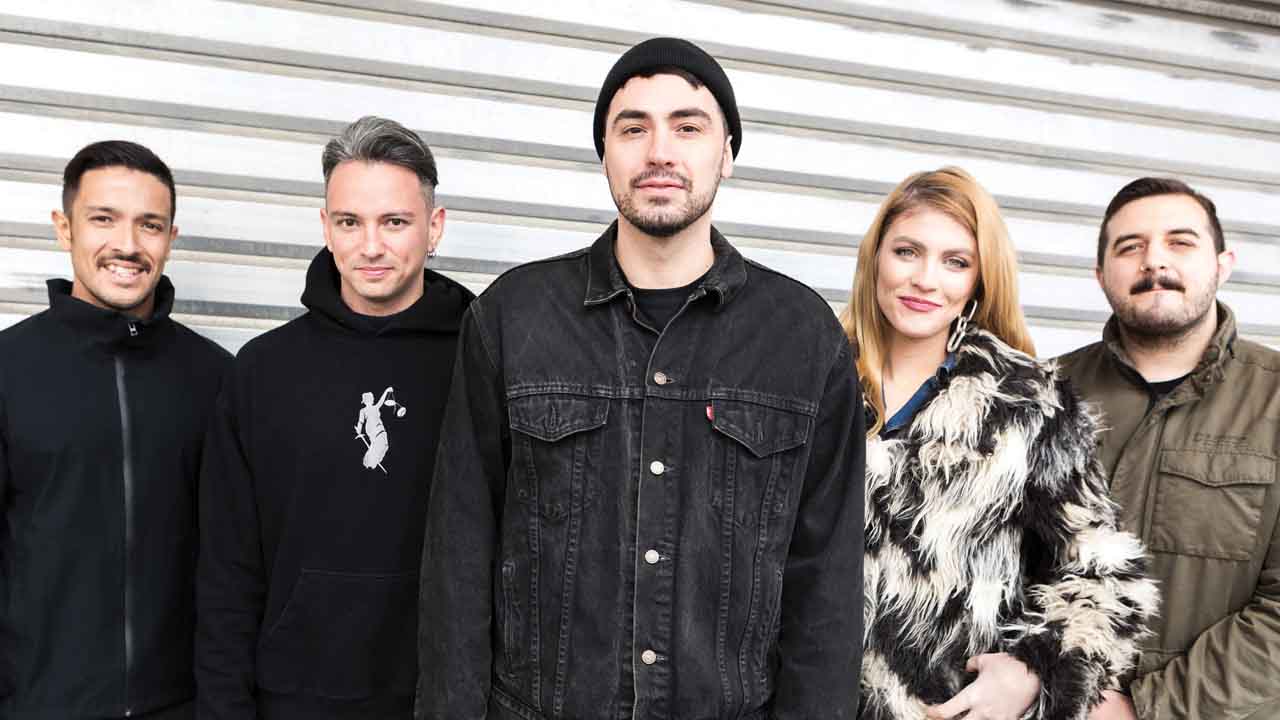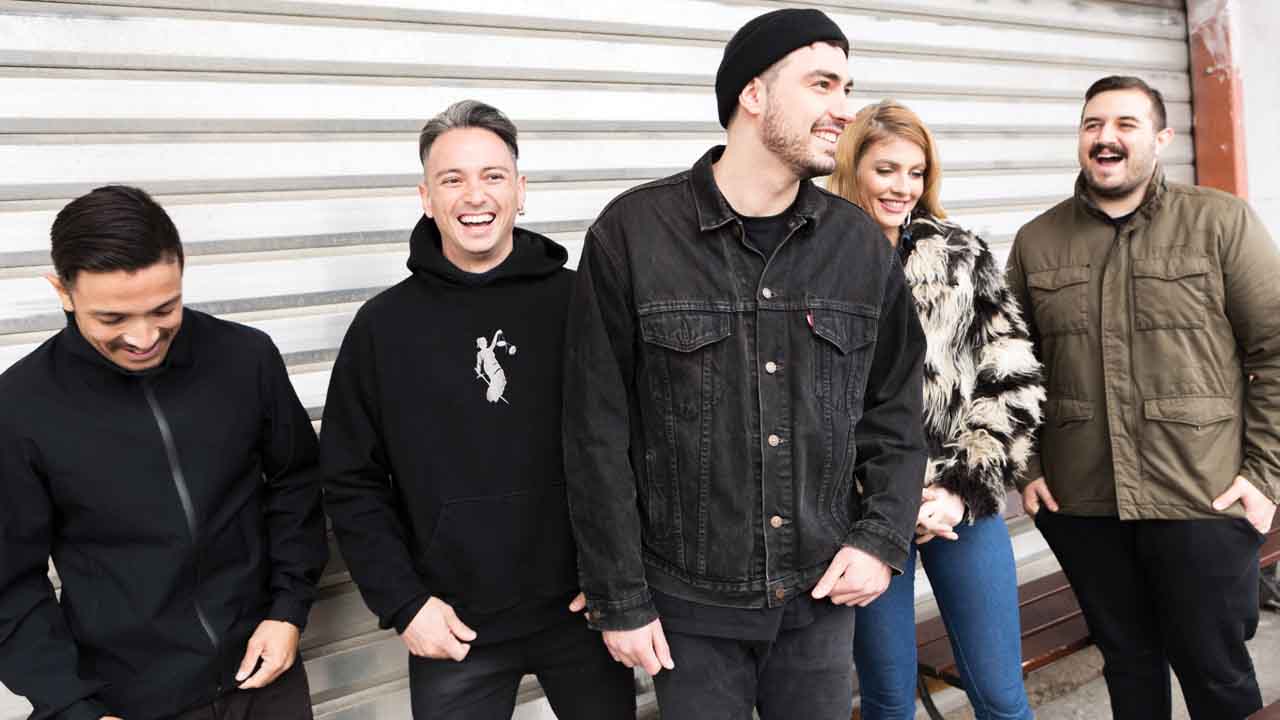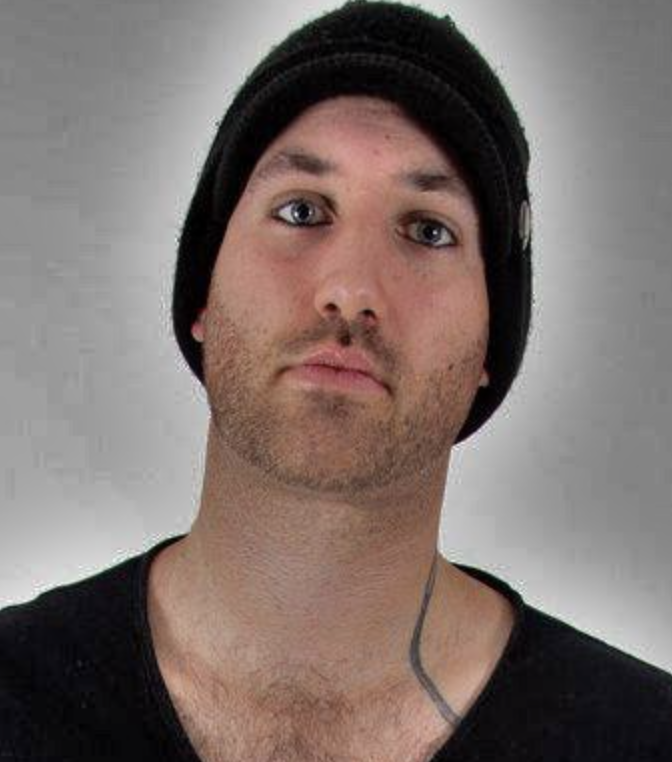Make Them Suffer: “There’s an epidemic of suicide in our society. It’s horrible to see”
Aussie metalcore crew Make Them Suffer’s new album How To Survive A Funeral is more than just their shot at the big time – it’s a chance to process their grief

Perth is one of the most isolated major cities on the planet. Located on Australia’s west coast, it’s closer to Jakarta in Indonesia than it is to Sydney. The closest place with a population of more than 100,000 is Adelaide, which is more than 1,300 miles away.
Much like Seattle in the early 90s, the sense of isolation has turned Perth into a place of great artistic creativity. The late Oscar-winning actor Heath Ledger was born here, the likes of Hugh Jackman, Isla Fisher and Tim Minchin also trained in the city, AC/DC’s legendary frontman Bon Scott settled here after his family relocated from Scotland back in the early 1950s, and it’s where cult prog metallers Karnivool formed. It’s also where Make Them Suffer call home.
“Coming from Perth made things even more difficult for us,” says vocalist and founding member Sean Harmanis. “There are really only five other cities that you can play in, and it’s expensive for us to do that. Just to tour Australia we had either a four-day drive or we had to book flights. There are two schools of thought in our town; you either accept that you’re stuck there, or you want to get out and see the world, and to do that you have to push harder than everyone else. I think that’s why the ones that do make it out go on to achieve so much.”
- On a budget? Here are the best budget turntables
- The best bluetooth speakers you can buy right now
- Best headphone for music: supercharge your listening
- Spotify vs Apple Music vs Tidal: which streaming service is best for rock and metal?
Make Them Suffer aren’t quite on the level of The Joker and Wolverine just yet, but they’re certainly making headway. Since their formation in 2008, Sean has led his band from playing rudimentary deathcore in back rooms of pubs for “less than 40 people” to the Top 30 of the Australian charts (2017’s Worlds Apart entered at No.29). They’ve toured the world with scene heavyweights such as Architects, Whitechapel and August Burns Red.
Much of this is due to the sonic strides they made on the aforementioned Worlds Apart, a massive, science-fiction-themed epic that tore up their metalcore blueprint, adding more progressive elements and huge swathes of melody. Such was the momentum Make Them Suffer felt, they made the boldest move of their career, venturing outside of the confines of their homeland and relocating to Los Angeles to record upcoming fourth album How To Survive A Funeral with Bullet For My Valentine, Motionless In White and Lil Wayne producer Drew Fulk.
“We always came out of each album process thinking the production was good but we didn’t like this thing or the other thing, and we didn’t want that again,” explains Sean. “We knew we had to get this record right; we had to throw ourselves into the process completely.”
Sean pursued the idea of recording with Drew after a conversation with a friend who had just worked with the producer. “We’d heard a lot of the newer stuff that Drew had produced and loved how eclectic he was, and when our mutual friend told us he had been jamming our song Vortex [from Worlds Apart], and telling them how much he loved it, we decided to go for it with him,” Sean tells us. “It was a huge risk for us to go all the way out there, but we needed to get way outside of our comfort zone.”
Sign up below to get the latest from Metal Hammer, plus exclusive special offers, direct to your inbox!

It was a move that initially set pulses racing, with Sean admitting the pressure of having to deliver a killer album, with a big-name producer in a foreign country, played on everyone’s mind. “We were nervous about it,” he nods. “But the label, our manager, our press people, everyone was very positive and supportive of the idea; they really pushed us to do that. Without that encouragement we might have wilted a bit.”
Their nerves weren’t helped by the fact that they were behind on work for the biggest album of their career. “It was kind of done on a bit of a whim. I don’t wanna say we were underprepared, we had a sizable riff bank, but we went with nothing and came out with a full album,” smiles Sean. “We just wanted to be open to all of Drew’s ideas, to be super-malleable. We’ve never worked that way before, but so much of the success of the record is due to us incorporating Drew in the writing process. We have never worked with a producer of his calibre before, so it was important that we did that.”
This openness to the possibilities of what the album could be played a huge part in the experimentation on the record. “I think the best way to work is to have a very strict time frame,” says Sean. “It’s pressurised, but we relied on spontaneity a lot, and if it didn’t appear to fit – if we chucked a dream pop hook in right next to a really metallic part – it didn’t matter, because it all came from the same pool of ideas. So thematically, even the outliers of the record still feel part of the overall album.”
Having gone in with almost nothing, it’s amazing that the band walked out of the studio with the best album of their career. Musically, How To Survive A Funeral is wild, eclectic, punishingly heavy and anthemically soaring, often within the same song. One minute you’re being brutally assaulted by a crushing deathcore beatdown, the next you’re lifted up by a sugary sweet, pure pop chorus or a beautifully lilting post-rock soundscape. But as Sean explained, it’s the themes of the record that bring it together. Essentially, it’s an exploration in coping with grief.
“Turning something dark into something more light-hearted is a theme that runs through the record – that juxtaposition is what it’s about,” he says, before pausing. “That and death. Since the release of our last album a lot of our friends have passed away. There’s an epidemic of suicide in our society, and it’s horrible to see. That’s maybe just what I’m being exposed to, but I wanted to explore that, to look at the dark and try and demystify it.”
It’s clear that Sean doesn’t want to be pushed too much on the subject. When asked what he means by an epidemic, his voice, previously upbeat and sunny, slows to a stuttered crawl as he tries to make sense of what he’s been through. “We’re just so disconnected these days, aren’t we?” he shrugs. “I think people feel more alone even though they are constantly told they are connected. I don’t think social media helps anyone, I don’t think the fact that we’ve forgotten to interact with real people, or go outside and enjoy nature and get some vitamin D from the sun helps. There are so many factors as to why more and more people feel helpless, I wouldn’t even know where to begin…”
He stops. “I don’t want this to get too dark, we should change the subject.”
We move on, Sean’s point has been made; How To Survive A Funeral isn’t your usual bravado-filled deathcore album, something its creator feels very pleased about. “Well, we listen to more of the alt-rock, less riffy stuff, you know – Radiohead, My Bloody Valentine – and it’s important to show that wide range of influence,” he says, before reflecting on the current state of the metal scene of his home country. “Metal is obviously still a very big part of what we do. It’s a crazy time for Australian metal right now, and our goal is to keep improving so that we can continue to go to the UK, Europe and America, and pull as many people there as we do at home. We’ve got the bug for it now; we want to keep seeing the whole world.”
Make Them Suffer – How To Survive A Funeral
Australia’s Make Them Suffer raise the bar with their fourth album, How To Survive A Funeral. Produced in the LA by Drew Fulk, it finds them pushing back the boundaries of deathcore. An essential album for 2020.

Stephen joined the Louder team as a co-host of the Metal Hammer Podcast in late 2011, eventually becoming a regular contributor to the magazine. He has since written hundreds of articles for Metal Hammer, Classic Rock and Louder, specialising in punk, hardcore and 90s metal. He also presents the Trve. Cvlt. Pop! podcast with Gaz Jones and makes regular appearances on the Bangers And Most podcast.

